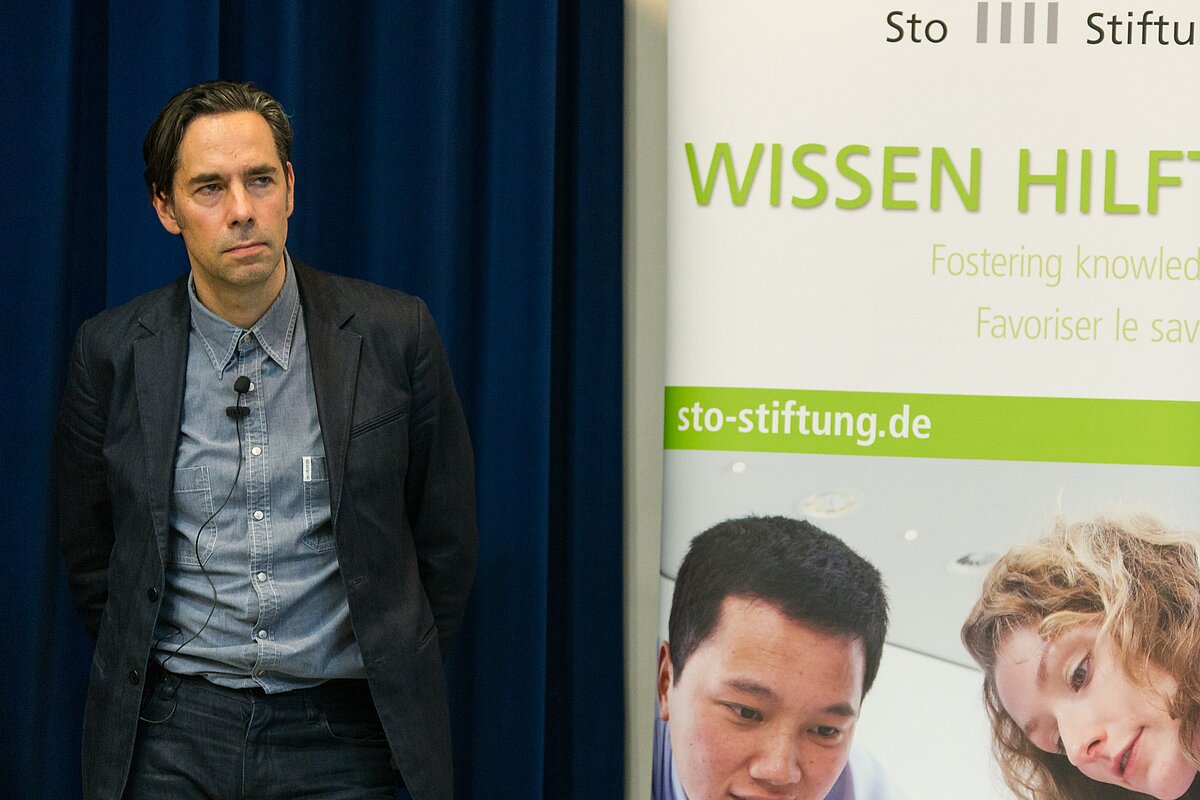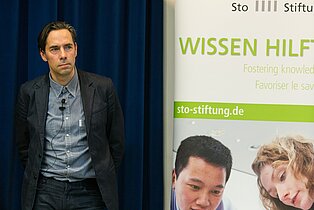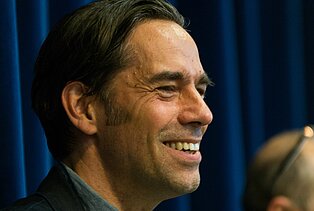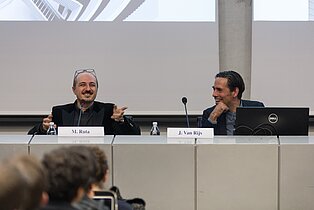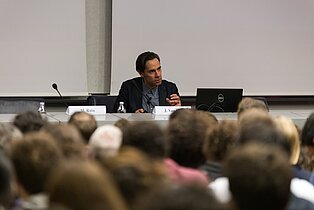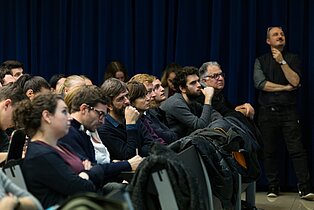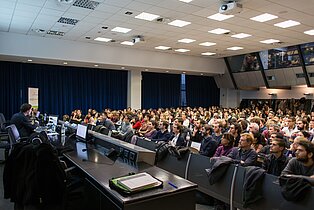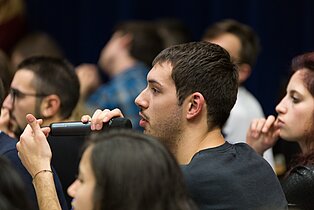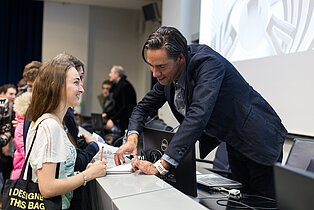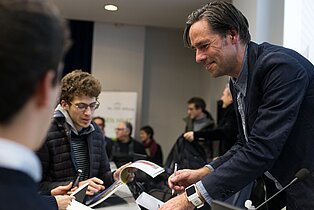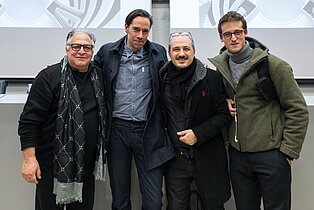Jacob van Rijs | MVRDV | Rotterdam
November Talks 2016 in Milano
The third November Conferences’ lecture featured the astonishing works of MVRDV office. Architecture, urbanism and research have been treated as a cohesive architectural approach to envision integrated buildings, city developments and material innovation. Jan van Rijs, which with Winy Maas and Nathalie de Vries founded MVRDV in Rotterdam in 1993, illustrated to the audience how their works are connected to each other by a methodical research on density, diversity and transformation. Spatial reorganisation and shape complexity are melted in different ways to achieve the best possible use of land. Their first publication, FARMAX (1998), is a handbook guide and a manifesto for MVRDV’s central theme, which highlight the density issue especially in those countries, such as the Netherlands, where space needs are a nowadays concern.
MVRDV’s architecture focus is about how the building relates to its context, and thus the shape itself in some manners reflects the surrounding without replicating it. The Rotterdam Market Hall, concluded in 2014, renovated the pre-war centre of the city with a building that combines food, leisure, living and parking, all fully integrated in a unique building. The most interesting feature of this building is the hall, which is shaped by an arch embellished inside with a multicolour covering. The idea of a building that comes out from the ground is well expressed by the outdoor cladding system, which takes inspiration directly from the colours and the proportions of the pavement tiles. By contrast, the tunnel like shape is closed to both sides by a flexible suspended glass façade that allows the view towards the outside, the largest of its kind in Europe.
MVRDV urban development visions have been hypothesised for the Almere Oosterworld project, a D.I.Y. design that puts power into the hands of neighbourhoods and communities. The project, which considers 15000 dwellings, 26000 jobs positions and 135 ha to businesses, is based on a bottom-up approach, which sees the individual and community needs to be the first parameter to construct the city of the future. Similarly, MVRDV presented in 2012 the masterplan for the urban community of Bordeaux, called Bastide Niel, thought to combine history, human scale and individualism with density and sustainability. In this case, the existing historic structures and the rail tracks have been used as basis for the masterplan, maintaining them in order to see the existing part as a starting point for the new. Besides, the new constructions are intended to be an update of what already exist, and thus created by preserving, transforming, extending and extruding the previous configurations. New typologies have been envisioned by following this path and adding to the shape definition considerations about green areas, solar radiation and energy efficiency.
MVRDV, as it happens for a lot of architects, developed a fascination for glass facades and lighting effects coming from daylight and neon as well. The new façade concept of the Chungha building, realised in 2013 in South Korea, transformed the previous skin into a collection of shop windows made out of glass and framed with multi-coloured neon. A mosaic of advertisements describes the building from the outside, by showing at a glance the interior contents. In 2016, the 133 Wai Yip Street building, renamed “The Glass Office”, represents the last project of an ongoing exploration into the alternative use of glass in architecture. The existing building, stripped down by just maintaining the concrete preliminary structure, has been completed by white paint, glass and stainless steel in order to maintain and highlight the bare structure. Old and new are easily distinguished, having the former opaque and the latter transparent. Glass tables, shelves, walls and even floors are made by glass, used as metaphor of a “transparent society, who cares more about what goes on behind closed doors”. In the same period, MVRDV’s Crystal Houses in Amsterdam take form by considering the use of glass to construct external walls and window frames. This visionary project began with the request of the client to design a flagship store combining both Dutch heritage and international architecture in the luxury brand street of the city. The near fully-glass façade replaced bricks in the first two floors and mimic the original design dissolving into a traditional terracotta bricks for the last floors, where the apartments took place.
The Crystal Houses show MVRDV architectural approach, in terms of creativity and protrusion towards the future. As they proceed as a team, they often invite unexpected disciplines to join the forces and to mix disciplinary categories. Experimentation, systematic method and creativity allow them to push clients in unexpected directions, raising up expectations and providing new architectural ideas for the future.
Video-Interview with Jacob van Rijs
Visit our YouTube-Channel


